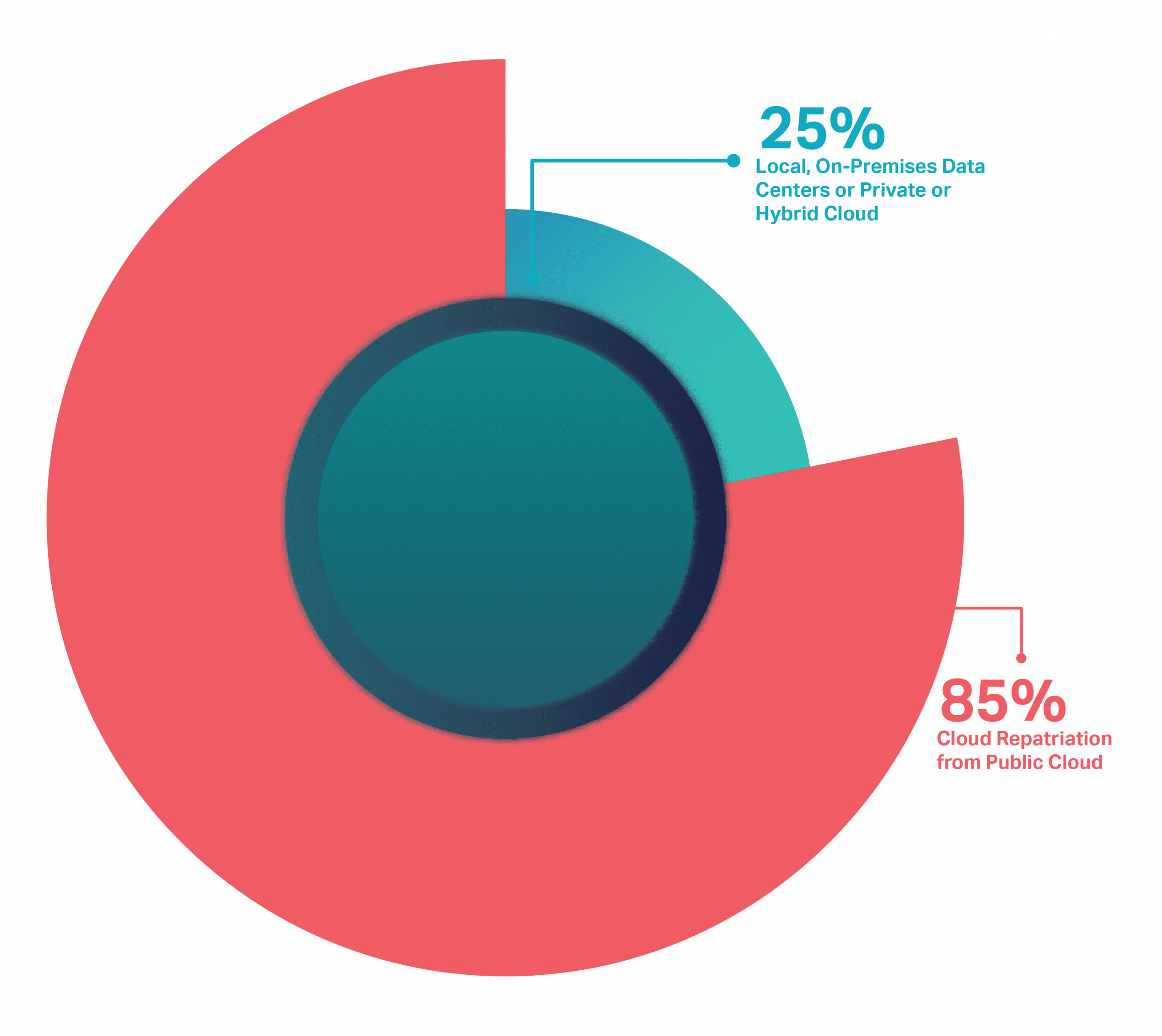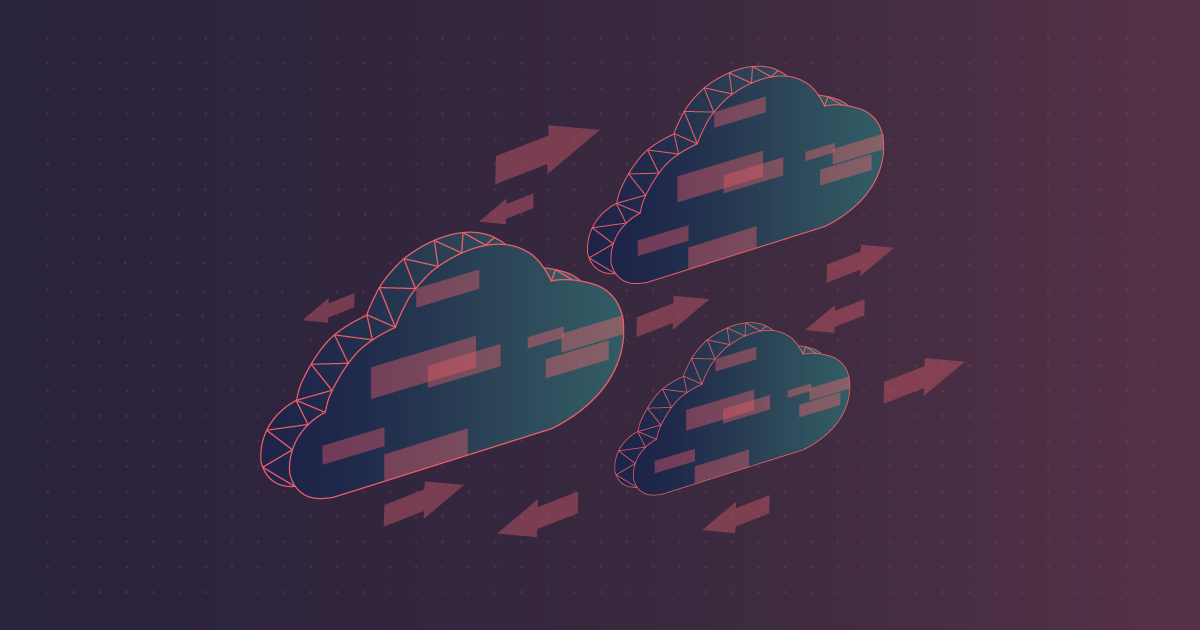Cloud computing is one of the great technologies of our era. As such, enterprises everywhere are in a hurry to migrate to the cloud.
However, one of the less-talked-about trends of our time is cloud repatriation: the process of enterprises reversing their decision, leaving the cloud, and returning to an on-prem setting.
According to TechTarget, 85% of enterprises reported plans of repatriating their workloads from the public cloud in 2019. Fast forward a year later, and 1 in 4 enterprises had put their cloud migration strategy on hold and retrograded either partially or fully to their previous computing environments.

According to one study, insufficient planning and rushed implementation forced 72% of enterprises to put their cloud migration on hold and partially or fully scale back to their previous computing environments.
Is cloud repatriation really this common, or is it actually just a myth? And if it is a growing phenomenon, how can proper cost management help enterprises avoid having to take this step?
What is Cloud Repatriation?
Cloud repatriation is a process in which organizations migrate their applications, workloads, and data currently running in the public cloud back to either local, on-premises data centers or to a private or hybrid cloud.
For some enterprises, repatriating from the cloud means a total retreat to their previous on-premises IT infrastructure. For others, it involves replacing the public cloud with more sophisticated private cloud solutions or hybrid cloud-based environments.
Is Cloud Repatriation a Myth?
Several cloud experts don't buy the repatriation narrative. For one, the cloud's growing ubiquity means it touches every industry, organization, and individual. Plus, the volume of data in the cloud is increasing at furious rates—faster by at least 2,000 basis points than the data produced on-prem. These experts argue that it makes no sense for enterprises to reverse back to an on-premises setting when the cloud is all around and used by just about everyone.
If it is just a myth, it’s because only a very small number of enterprises are moving their data back to on-prem environments for good.
To better understand why an enterprise would repatriate from the cloud when it’s so omnipresent, let’s take a look at a few compelling reasons.
Unexpected Costs Fuel Public Repatriation from the Cloud
Cloud providers have constantly trumpeted the benefits of the cloud. But why are enterprises experiencing cloud migration management difficulties? Isn’t the cloud supposed to make business computing better?
One of the most prevailing factors for moving back from the cloud is the unexpected costs stemming from cloud computing. Statista cites “cloud spend management” and “lack of resources” among the biggest challenges of cloud migration, both related to unexpected costs.
Enterprises that proceeded with their cloud migration plans often find themselves unprepared for the underlying costs that exceed initial expectations. While many vendors would advertise the cloud as a money-saving innovation, the reality is that workloads running in the cloud can consume a staggering amount of resources.
These can range from storage volumes, pay-as-you-go services, server instances, and other components. The more complex a workload is, the more easily the cloud bill can get out of hand. Further complicating cloud expenses is the fact that every workload’s resource requirements, resource utilization, and underlying service costs change over time.
As workloads require an adequate supply of resources to operate at optimal levels, enterprises resort to overprovisioning. However, overprovisioning leads to overspending.
This is the trap we see companies fall into again and again.
In our recent survey, we discovered that one-third of our respondents are spending as much as 40% beyond their initial cloud budget. The majority also said they highly prioritize means to “better optimize current cloud resources,” indicative of resource provisioning troubles within their cloud.

Compounding this overprovisioning concern is the fact that major cloud services providers (AWS, Microsoft Azure, and Google Cloud) give their clients little to no incentive to discourage them from overprovisioning.
Why Cloud Repatriation Isn’t Ideal
Shifting back to an on-premises or private cloud computing environment may sound ideal for enterprises experiencing cost challenges with their current cloud setup. However, rebuilding an on-premises infrastructure for re-migration isn’t a straightforward prospect.
There are too many things to consider, including data transfers, hardware investments, floor space, security, maintenance, downtimes, backup, and recovery. All of these can cost even the biggest companies a substantial amount of capital.
Large data centers cost between $10 million to $25 million to operate and maintain. Even for financially stable enterprises, such an expense represents a decent portion of their budget.
Any forward-looking organization that has invested so much in the cloud would think twice before opting to put their cloud migration strategy on ice, redo their migration efforts, and revert back to their previous computing setup.
Cloud Migration Management: The Answer
While cloud repatriation may be emerging, enterprises can still get the most value from their cloud investment without having to scale back to an on-premises setup. To do this, they need to implement an effective and solid migration management strategy.
Pepperdata gives enterprises a cloud optimization solution that delivers precise and automated observability into the characteristics and performance of workloads. Such superior visibility enables you to better understand your processes and applications down to the smallest detail, allowing you to fully understand the issues of your cloud environment and resolve them quickly with minimal downtime.
Pepperdata paints you a clear, real-time picture of your cloud infrastructure and automates the optimization of processes including resource utilization and application performance management. With Pepperdata, even the most complex cloud infrastructure is able to perform at an optimal rate and handle even sudden spikes in usage and traffic, guaranteeing SLA-level performance and keeping cloud costs manageable.
The Public Cloud is Still Critical
The public cloud computing industry is set to grow from $257.5 in 2020 to as much as $305 billion by the end of 2021 and $362.3 by 2022. Even with this signaled shift from public to private/hybrid cloud or even back to on-prem environments, public cloud will remain a large component for businesses looking to invest in cloud computing.
The key for enterprises to derive maximum value from their public cloud investments is to prevent cloud repatriation from happening. Or, at the very least, control it.
Pepperdata provides businesses with a solution that prepares them before their migration. We also help them implement effective cloud management post migration.
Through Pepperdata, enterprises can fully optimize their cloud migration strategy and post-migration performance through proactive monitoring, dynamic resource management and allocation, and optimization recommendations based on real-time performance data.
Explore the Pepperdata solution using the interactive demo, or sign up for a free trial to experience the Pepperdata advantage.




